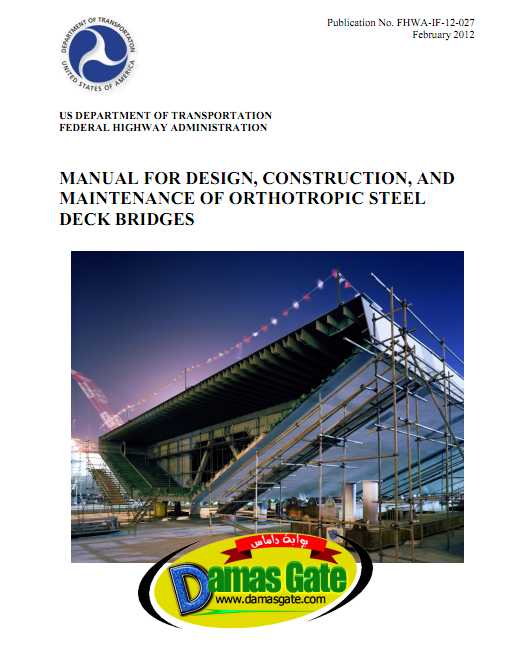Manual for Design, Construction and Maintenance of Orthotropic Steel Deck Bridges
1. INTRODUCTION
1.1. INTRODUCTION TO ORTHOTROPIC STEEL DECK BRIDGES Many of the world’s most magnificent modern bridge structures utilize the orthotropic steel plate

systems as one of the basic structural building blocks for distribution of traffic loads in decks and for the stiffening of slender plate elements in compression. Examples include the new San Francisco Oakland Bay Bridge, Self Anchored Suspension Span in California and the proposed Strait of Messina Bridge in Italy. Stiffened steel plates have been used for many years in a wide range of steel construction applications. They are particularly prevalent in the ship building industry and for hydraulic applications such as tanks, gates, and locks. The first orthotropic steel deck (OSD) bridge was developed by German engineers in the 1930's and the first such deck was constructed in 1936. In the United States, a similar system was built and often referred to as a “battle deck” because it was considered to be as strong as a battleship.
Generally, the OSD system consists of a flat, thin steel plate, stiffened by a series of closely spaced longitudinal ribs with support by orthogonal transverse floorbeams (Figure 1-1). The deck has considerably different stiffness characteristics in the longitudinal and transverse direction. Hence, the deck is considered to be structurally anisotropic. The name “orthotropic” arises out of a shortened form of the technical structural description of the system. According to Orthotropic Bridges – Theory and Design (Troitsky, 1987), “Because [the] ribs and floorbeams are orthogonal and because in both directions their elastic properties are different or anisotropic, the whole system became known as orthogonal-anisotropic, or, briefly, orthotropic.” German engineers are credited with creating the word “orthotropic” and a patent was registered in 1948 (Sadlacek, 1987).
The OSD is efficient in that it is integral with the supporting bridge superstructure framing as a top flange common to both the transverse floorbeams (FBs) and longitudinal girders. This results in increased rigidity and material savings in the design of these components. As with other conventional steel-framed construction, loads are generally transferred by FBs transversely to the main load carrying system, such as longitudinal girders. Although, transverse members in the deck are most often referred to as floorbeams, there are also other commonly used terms such as crossbeam and/or diaphragm. Diaphragm is most appropriate when the deck is used in a redecking application and the member is rigidly, continuously attached to the existing bridge framing. Intermediate floorbeam may also be used where the FB member is not supported at its ends by main members and it is only serving to provide load distribution in the deck. The defining characteristic of the OSD bridge is that it results in a nearly all steel superstructure which has the potential (with minimal maintenance) to provide extended service life and standardized modular design, as compared to more conventional bridge construction.
Download
http://s18.alxa.net/s18/srvs2/02/002...ck.Bridges.rar